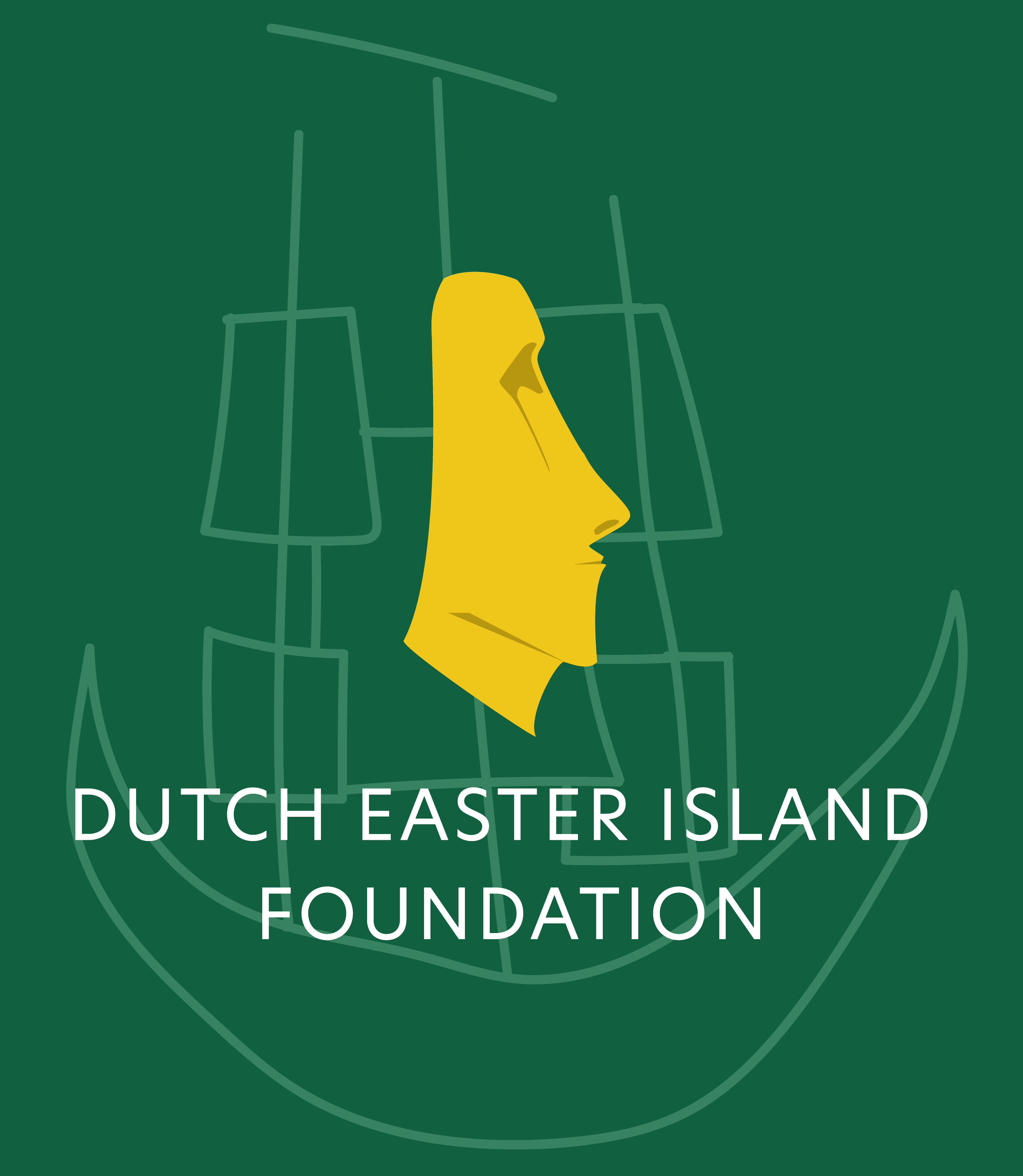DOCUMENTARY FILMS
We are very happy and proud to announce the attendance to the conference of Tiziana Panizza, director of the film TIERRA SOLA; Carmen Brito and Andrea Seelenfreund, Director and Producer of the film BUSCANDO ISLA DE PASCUA LA PELÍCULA PERDIDA, and Leonardo Pakarati, Paula Rossetti and Mikaela Pakarati, Director, producer and main character of the film TE KUHANE O TE TUPUNA, EL ESPÍRITU DE LOS ANCESTROS.
Besides these three films we also will feature the documentary films YORGOS (2014, José Domingo Rivera, Paco Toledo) and EATING UP EASTER (2018, Sergio Mata’u Rapu).
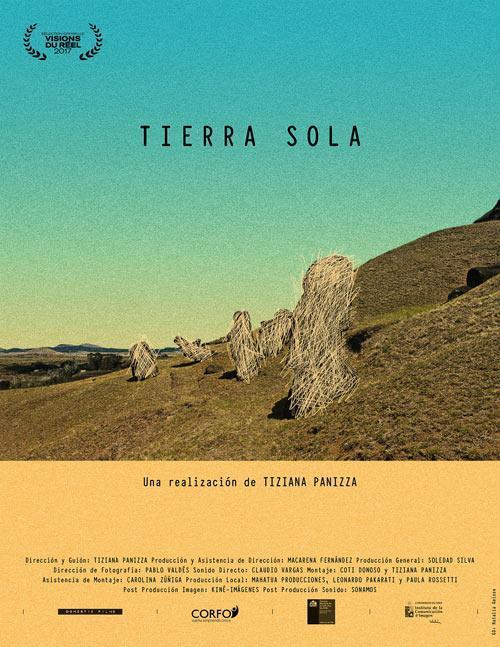
TIERRA SOLA (2017, 107’ min.)
SINOPSIS
Un investigador encontró 32 documentales filmados en Isla de Pascua hace casi un siglo. En todos hay imágenes de los Moai, pero casi no aparecen sus habitantes, en esa época tratados como esclavos, y encerrados en su propio pueblo. Desesperados, muchos de ellos se fugaron en precarios botes hacia alta mar. Tierra sola cuenta esa historia y el registro de su prisión actual; una pequeña comunidad custodiada por gendarmes nativos y chilenos. ¿Dónde iría un fugitivo en la isla más remota del planeta? Tierra sola es un documental acerca de la paradoja de la libertad en la isla más apartada del mundo.
A researcher found 32 documentaries filmed on Easter Island almost a century ago. They contain images of the island’s rock sculptures, the Moai, but they barely show the island’s inhabitants, whom at the time were being subjected to a cruel colonization, being treated like slaves and held captive for over 60 years. Desperate, many of them escaped on makeshift boats, heading out for open sea. Solitary Land /Tierra Sola tells the story of how one of the world’s most beautiful tourist destinies was once a prison, together with a register of the island’s current prison: a small community guarded by local and Chilean prison guards, from which no inmate has ever escaped. Where would a fugitive go on the planet’s most remote island? Solitary Land is a documentary about the paradox of freedom.
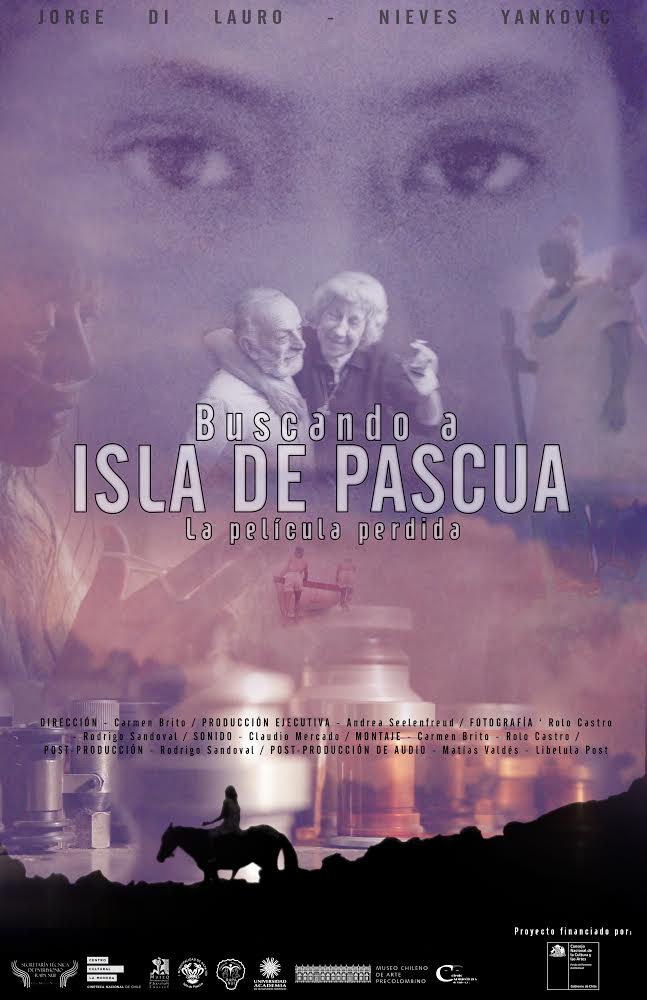
BUSCANDO A ISLA DE PASCUA, LA PELÍCULA PERDIDA (2016, 59’55 min.)
SINOPSIS
El hallazgo de unos rollos de película comprados en un mercado persa de Valparaíso dan cuenta que se trata de negativos y descartes de la película desaparecida del cine chileno “Isla de Pascua”, filmada en 1961 por Jorge di Lauro y Nieves Yankovic. Una arqueóloga y una restauradora de cine deciden emprender un proyecto para recuperar el material faltante de la película. A partir de entrevistas a importantes cineastas e investigadores del cine chileno y de la protagonista del mismo, el documental reconstruye el trabajo de los autores, además rescata trozos importantes de la película, descartes y fragmentos de las filmaciones realizadas en 1961 que no aparecen en la película original. Las proyecciones en Rapa Nui de este material encontrado y restaurado dan lugar a diversas y emotivas reacciones por parte de los isleños, quienes nunca habían visto estas imágenes.
Giorgio di Lauro and his wife Nieves Yankovic filmed “Isla de Pascua” on Easter Island in 1961. It was the first full feature Chilean documentary filmed on the island, and was later lost after the death of the couple in the 1970’s. The documentary narrates the search of the original film led by an archaeologist and a film restorer, and recounts its background based on interviews with Chilean film researchers, the Rapanui people and most importantly the main character that features in the original documentary. The documentary shows footage of the original film, describing life on the island before and after the onset of commercial flights, tourism and the installation of the Chilean administration.
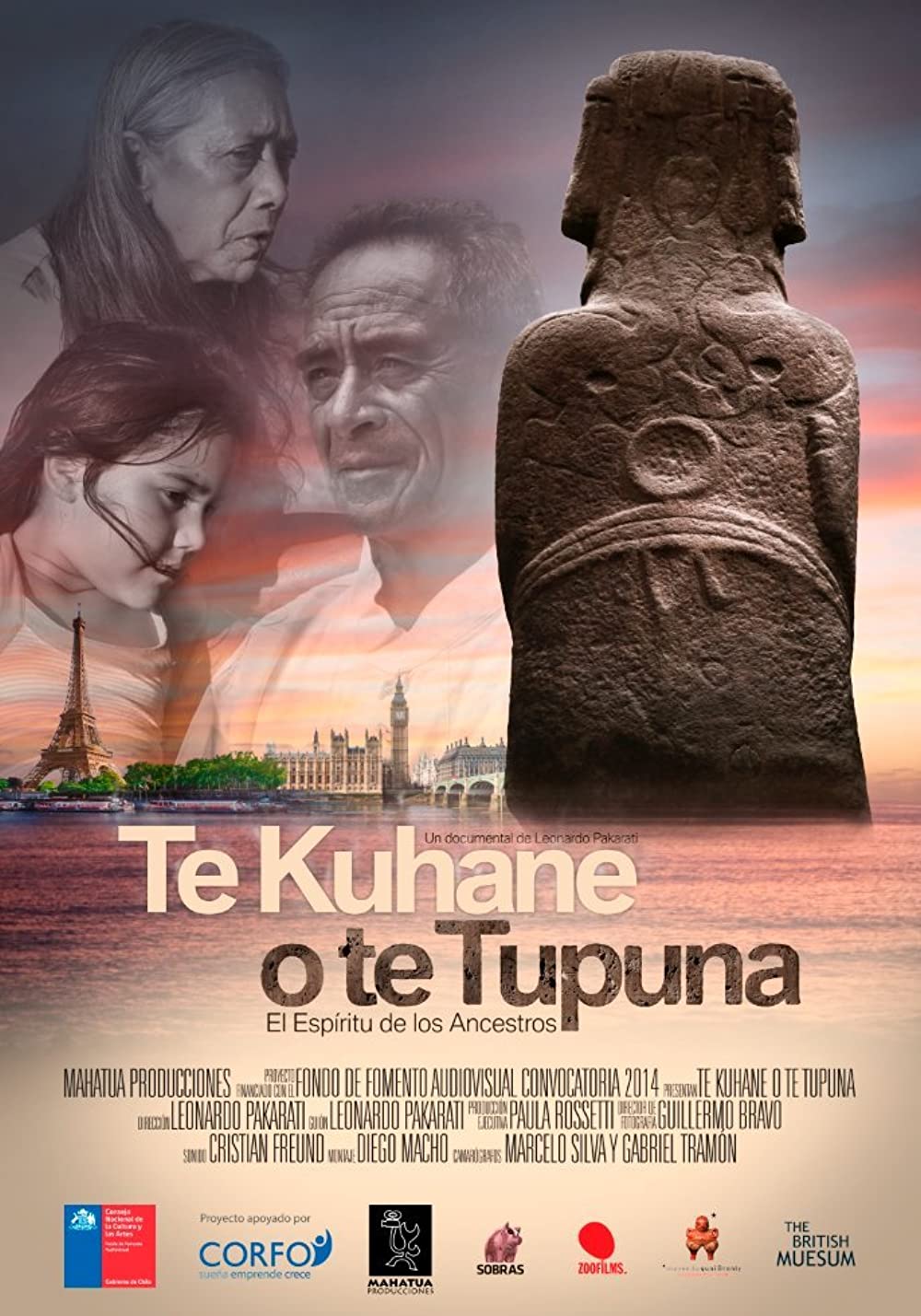
TE KUHANE O TE TUPUNA, EL ESPÍRITU DE LOS ANCESTROS (2017, 65’ min.)
SINOPSIS
Antes de morir, la abuela Noe quiere contarle a la niña Mika la historia del Moai Hoa Haka Nana’ia. Extranjeros se lo llevaron de la isla hace más de 100 años y nunca más regresó. Ella le dice que en la isla las cosas tienen Mana, un poder sobrenatural de sus antepasados que hoy se ha debilitado. Una forma de recuperar el Mana, para devolver el bienestar a la isla, es recuperar el espíritu del Moai Hoa Haka Nana’ia. El Moai está en un museo en Inglaterra, donde no se dan cuenta de esto Noe nunca ha visto a los Moai y ella no quiere morir sin haberlo hecho. Sin embargo, una enfermedad le impedirá viajar, por lo que en su lugar, Mika viajará con su abuelo Bene. Visitarán el Museo Quai Branly en París y al Museo Británico en Londres, donde descubrirán que cientos de piezas de su cultura se guardan en estas habitaciones. Por primera vez se encontrarán con el Moai Hoa haka nana ia. Este documental retrata un viaje en busca del Mana perdido, pero también será el registro de parte de un movimiento social y político por el que atraviesa la isla, que está tratando de recuperar el valor de lo que es suyo, sus tierras y el objetos que dan sentido a una de las cosmovisiones más complejas y extraordinarias del mundo
Before dying, grandmother Noe wants to tell Mika girl the story of the Moai Hoa Haka Nana’ia…foreigners took him away from the island more than 100 years ago and never came back. She tells her in the island things have Mana, a supernatural power from their ancestors that today has weakened. A way to recover the Mana, so to bring back well being to the island, is to bring the spirit of the Moai Hoa Haka Nana’ia back. The Moai is in a museum in England, where they aren’t aware of this. Noe has never seen the Moai and she doesn’t want to die without having done so. However, an illness will stop her from traveling, reason why in her place Mika will travel with her grandfather Bene, the most prestigious sculpture in the island. Mika and Bene will go to the Quai Branly Museum in Paris and to the British Museum, where they will find out hundreds of pieces from their culture are kept in these rooms. For the first time they will meet the Moai Hoa haka nana ia, who is missing in the ceremonial village of Orongo, from where he stopped the oceanic force of the waves.
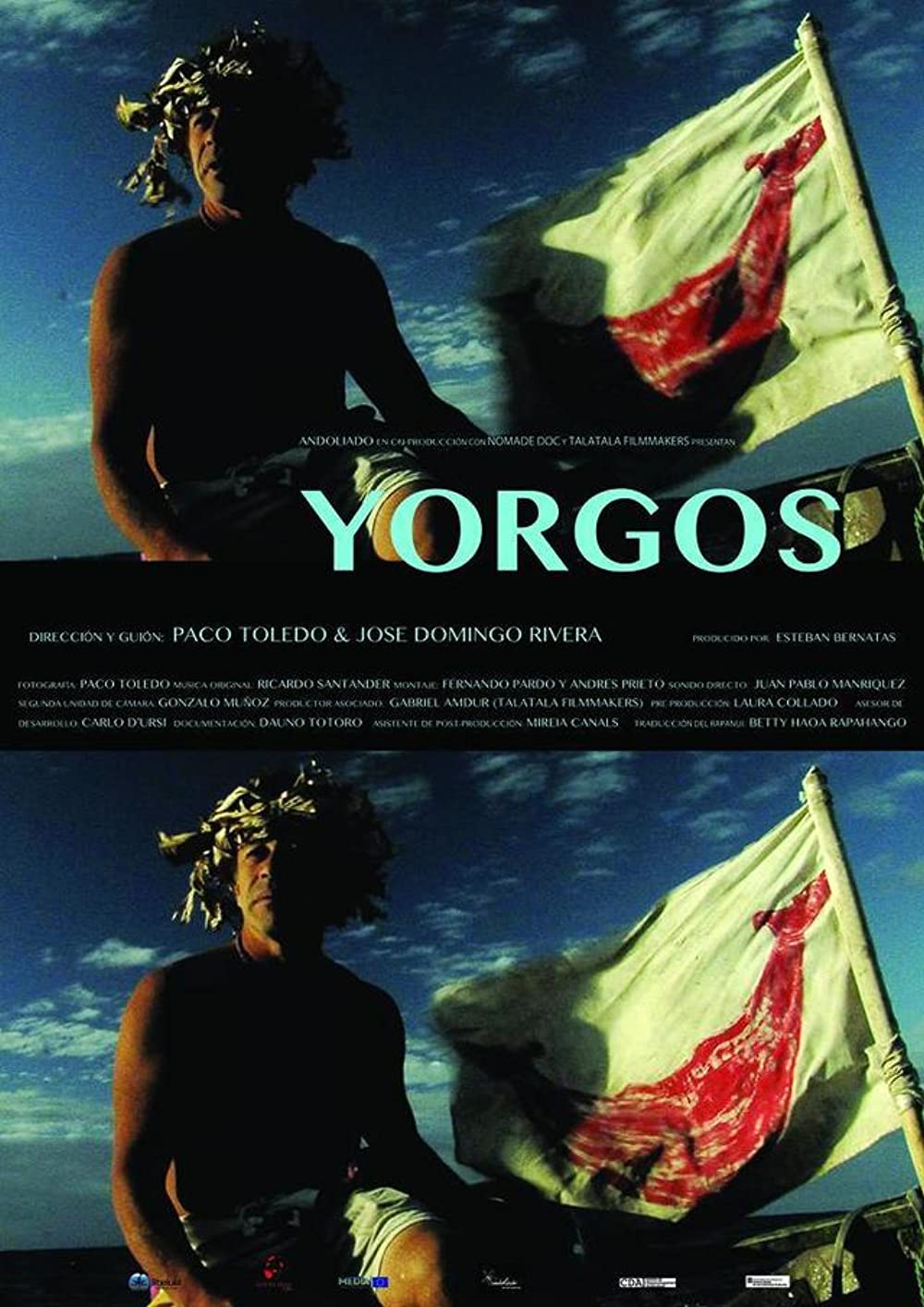
YORGOS (2014, 72’ min.)
SINOPSIS
En 1993, una producción de Hollywood cambiaría para siempre la vida de la gente de la Isla de Pascua. La superproducción “Rapa-Nui” atrajo millones de dólares a la pequeña isla y ofreció un trabajo a cada residente, pero modificó fuertemente sus tradiciones y la imagen que muchos de ellos tenían de sus propios antepasados y de ellos mismos. Esta es la historia de los Yorgos, los verdaderos herederos de la cultura Rapa-Nui, en su constante búsqueda de su propia identidad. Una historia sobre la colonización del cine.
In 1993, a Hollywood production would forever change the life of the people from Easter Island. Blockbuster “Rapa- Nui” attracted millions of dollars to the tiny island and offered a job to every resident, but strongly modified their traditions and the image many of them held of their own ancestors and themselves. This is the tale of the Yorgos, the true heirs of the Rapa-Nui culture, in their constant search for their own identity. A story about film colonization.
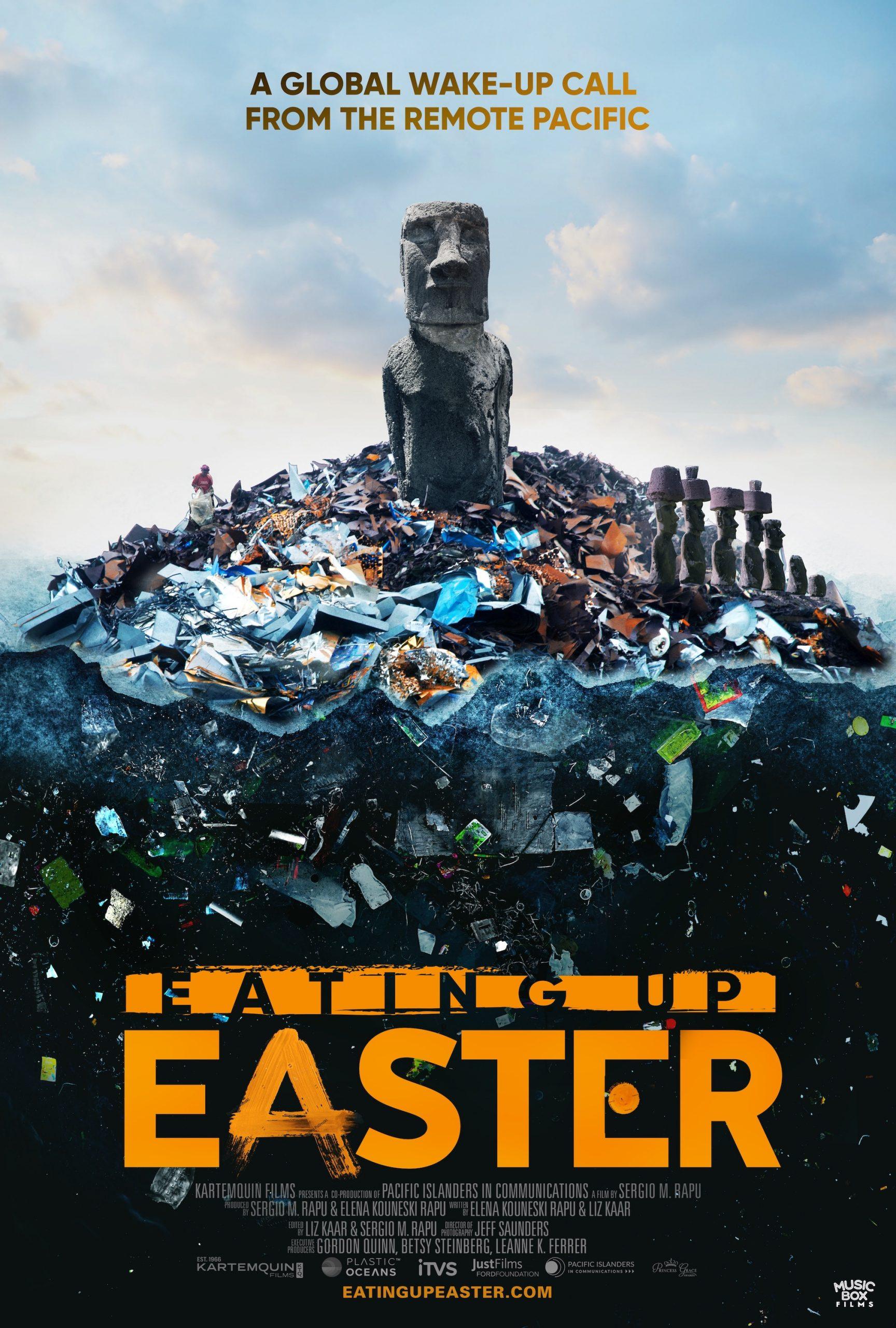
EATING UP EASTER (2018, 76' min.)
SINOPSIS
El cineasta nativo de Rapa nui (Isla de Pascua) Sergio Mata’u Rapu, narra a su hijo el dilema moderno de su gente que corre el riesgo de perder todo por los efectos globalizadores del turismo. La película sigue a cuatro isleños, descendientes de los antiguos constructores de estatuas, que están trabajando para abordar las consecuencias de su hogar en rápido desarrollo. Mama Piru lidera los esfuerzos de reciclaje para reducir la basura, Mahani y Enrique usan la música para reunir a su comunidad dividida, y Sergio trata de comprender las motivaciones de su padre, que abraza las ventajas de construir nuevos negocios. Estas historias se entrelazan para revelar las complejidades del desarrollo y las contradicciones dentro de nosotros a medida que nos enfrentamos a decisiones difíciles sobre el futuro de nuestro planeta.
Native Rapanui (Easter Island) filmmaker Sergio Mata’u Rapu narrates to his son the modern dilemma of their people who risk losing everything to the globalizing effects of tourism. The film follows four islanders, descendants of the ancient statue builders, who are working to tackle the consequences of their rapidly developing home. Mama Piru leads recycling efforts to reduce trash, Mahani and Enrique use music to reunite their divided community, and Sergio tries to understand the motivations of his father who embraces the advantages of building new businesses. These stories intertwine to reveal the complexities of development and the contradictions within us all as we are faced with hard choices about our planet’s future.
